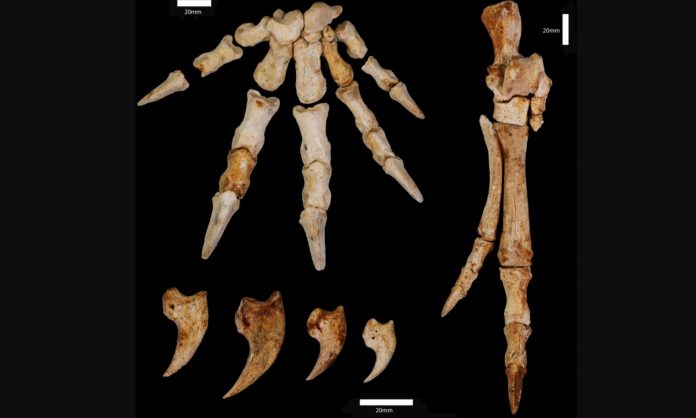Flinders University palaeontology researchers have helped to discover and describe a new species of climbing kangaroo.
The scientists from Flinders and Perth’s Murdoch University found the remains of an extinct kangaroo or ‘climb-aroo’ in the Nullarbor Plain Thylacoleo Caves and Mammoth Cave of Western Australia.
Their study of the morphology of these animals’ remains showed how they adapted to climb trees, adding substantially to the fossil record and our understanding of the previous diversity of the kangaroo family – and changes in their habitat and environments of Australia, says Professor Gavin Prideaux from the Flinders Palaeontology Laboratory.
The extinct kangaroo adapted to climb through powerful adduction of the forelimbs and hindlimbs, grasping hands and strongly curved claws, say Professor Prideaux and Murdoch University’s Dr Natalie Warburton in a new paper in Royal Society Open Science journal.
Compared to other kangaroos and wallabies, the fossils have unusually long fingers and toes with long, curved-claws for gripping, powerful arm muscles to raise and hold themselves up in trees, and a longer more mobile neck than other kangaroos that would be useful for reaching out the head in different directions for browsing on leaves.
Professor Prideaux, co-director of the Flinders University Palaeontology Laboratory, says the two skeletons were discovered in 2002 and 2003 by WA cavers Paul Devine and Eve Taylor during expeditions to the Nullarbor Thylacoleo Caves.
“Despite purportedly being an expert in fossil kangaroos, it took me most of that time to work out that these two skeletons belonged to a species first described decades earlier from jaw fragments from a cave in southwestern Australia,” says Professor Prideaux, co-director of the Flinders University Palaeontology Laboratory in Adelaide, South Australia.
“These Thylacoleo Caves – a major focus of Flinders Palaeontology research over the past two decades – are famous for the both the remarkably complete preservation of the fossil remains and the insights they provide into the unexpectedly high level of diversity of large marsupial species that inhabited what is now an arid treeless plain.
“This discovery provides yet another reminder of just how little we understand of even the relatively recent geological past in Australia,” he says.
As well as the unexpected tree-climbing behaviour in a large wallaby, these specimens come from an area that is now bare of trees.
“So this tells us that the habitat and environment in the area were really different to what they are now, and perhaps different to what we might have previously interpreted for that time,” says Dr Warburton, an expert in marsupial anatomy.
The new species also differed from all other kangaroos in possessing a highly unusual pocket within its nose.
“The specimens we analysed – including several cranial and two near complete skeletons – suggests this kangaroo species would climb and ‘move slowly’ through trees,” Dr Warburton says.
The link between structure and function in animals provides important information on our unique wildlife, both living and extinct.








